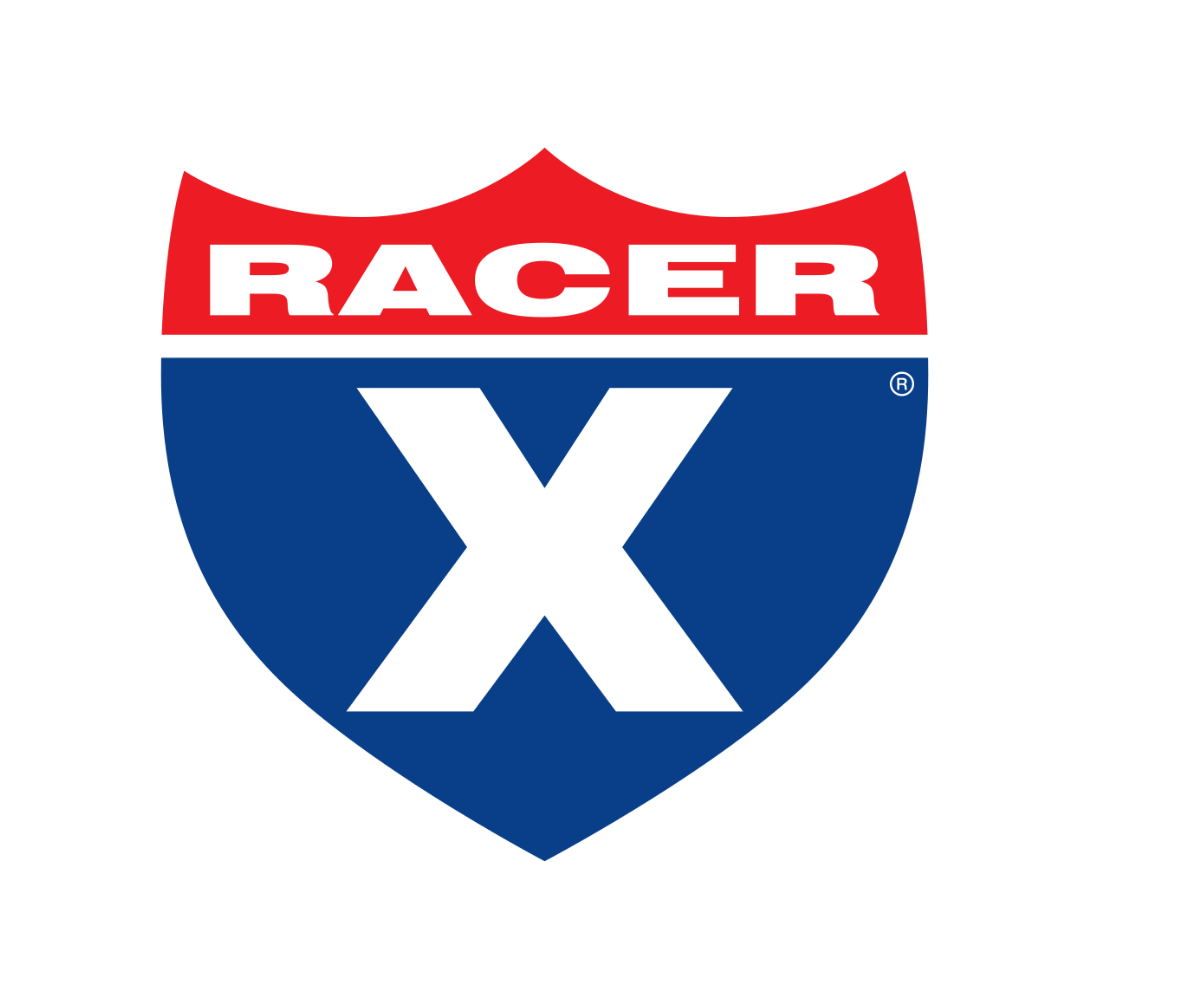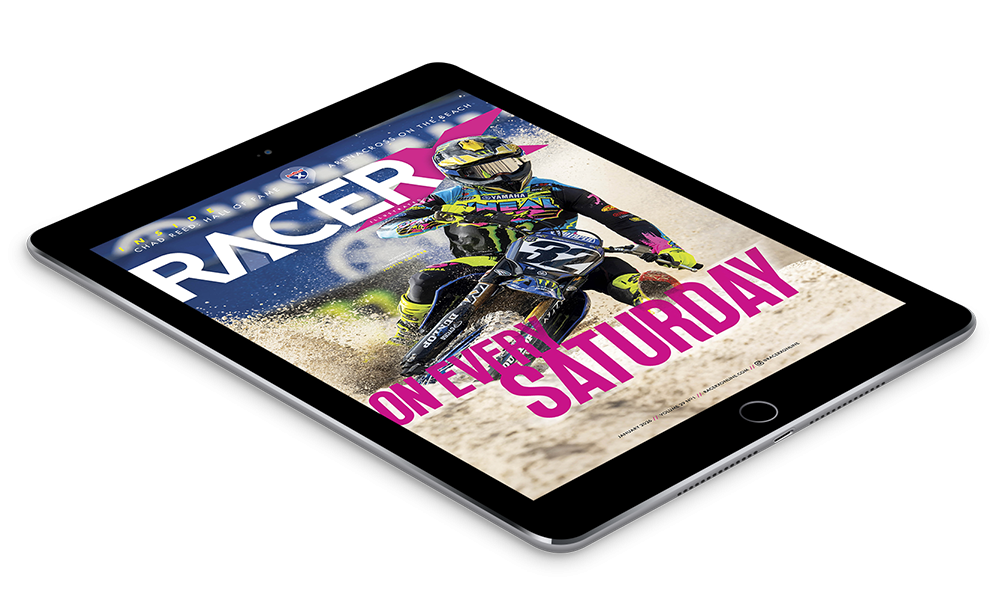The latest version of the official Monster Energy Supercross video game from the Italian developers Milestone was officially released yesterday. As with each new iteration of the game, a lot of focus from players turns to what changed from the last game to the new game and why certain changes were or were not made. Creating the ideal supercross game is not as simple as critics often make it sound and while the latest Monster Energy Supercross 4 game may not be everyone’s cup of tea, it still does provide a new official game for our sport.
To understand why choices are made, how the game development cycle works, and the work that goes into each game, we caught up with Lead Game Designer Federico Spada earlier this week to hear all about it.
Racer X: From Racer X’s perspective, we like to know how you translate that authentic experience that you see at a supercross, that the fans experience, and what the riders feel, into a game? What is the development cycle to start with? This is the track, these are the riders, this is all the stuff we 3D-scanned, and then transform it into something that we see in the stadium every weekend.
Federico Spada: First of all, I would like to point out that all the things that are put into the game come from extensive work of research. Most of the time it’s something that not a lot of people think of when they think about game development in the first place because the misconception is that making games is just playing games all the time, but it is not. There’s a lot of research. Absolutely research is the key because in order to put the correct riders, the manufacturers, all the items, knowing the tracks and all the rules… Even the ability to have all the race options in the correct place means a lot of research. So that’s the main part. After research, obviously making a game is about collaboration between the teams. Obviously, you have the design team, the programming team, and the 3D artist team. These three teams have to collaborate strictly because obviously design kind of conveys all the ideas that we want in the game, then programming has to program all the stuff, and the artists obviously have to make it happen from a graphic point of view. So, these three teams must be like one solid watch that works at the same time and must work in the same direction. That’s one of the most important aspects while making a game. So, it’s research and collaboration. This requires a lot of planification in advance, so you want to plan exactly what you want in the game. Most of the time you need to do it really a lot of time in advance, especially with a game that has yearly release that has to be released every year. You want to be clear from the beginning of what will be inside a game, so there is a lot of planning in advance. I think these are the three main aspects that have to be taken into consideration when approaching the game and trying to respect the fans’ request and trying to respect their passion, which is super important. One thing that I really care about is actually how the fans are passionate about the sport. You want to really respect this passion. You want to get close to their passion and study how they feel, study how they react, what they want. This is absolutely another really important part.
So, you talked a little bit about each team needing to work together. How much time is put into each aspect of the game? I know you guys obviously have multiple titles that you release every year. It’s not just supercross but MXGP and Ride and MotoGP as well. So how much time do you actually get to focus on developing the physical aspect of the game or improving graphical aspects of the game? What is each cycle like and how much does the team actually get to change?
That depends year from year depending on what are the main areas of focus in terms of development. Let’s make an example. Let’s talk about for example about SX4. So, as you know, SX4 had a completely revamped career. So, we started with a really simple career in SX3 with obviously there were official teams. That was a big thing for us to have into the career. But then we felt that for Supercross 4 we really needed to step up our career game. So, a lot of time was spent by all the three teams that I talked previously just on making this happen. So, the design had to come up with the ideas and we had to work with programming, telling us what we could do, what we couldn’t in terms of implementation. What were the best practices to make it happen. Obviously, the artists had to come up and tell us, we have our limits. This is what we can produce. What can we do? This idea of keeping all the things together and keeping all the teams talking all the time had us working in the same direction to create this new career. So, for SX4 a lot of time was spent just for the career. On other titles, it can depend on how much focus obviously is required to work on. There are some standard times that are used, like for example we usually start planning for the games with sort of pools of time that we will be absolutely spending for a particular part. Let’s say physics. We’ll start with having a determined amount of hours, to say the least. Then obviously there will be more hours added as we go through the project. By doing this, we are sure that every aspect of the game will be covered and will be seen again by the new development team and with the new title so it will be coherent with the rest of the game. If a particular area requires more time, more hours will be put into that specific area of development.
You mentioned needing to put a game out every year. How challenging is that? Obviously for licensing rights you guys want to have a game released every year, you need to go and get all the licensing rights to the teams and the stadiums and stuff like that. How challenging is getting all that coordinated and making this game as authentic as it can be like that?
The licensing part is another really challenging part of making a game because in our game, as you know, there are a lot of brands, a lot of teams, a lot of names, a lot of OEM’s that are showcased. This requires a lot of requirements from our license team outside. This is another really cool part because we obviously have to talk with a lot of partners to make this happen. I can see that this is really challenging because you want to be sure that if you want a particular brand to be in the game, you have to really, really think three steps ahead because otherwise there will be no time and you will be not sure that a particular brand will be in the game. So, this is probably the most challenging part in terms of planning for the final execution, which is putting that brand into the game.
Give me a little bit of a run-down on how you create each track for the game as well. I know you guys do some 3D scanning and stuff like that. What do you do from the first step until you have a finished product on the track? How much work goes into each track, and what are the steps to actually create each one for the game?
This is sort of like a personal question because when I started working on SX1 I was a level designer, so this is something that I can talk about really deeply. The main thing is obviously first of all we gather all the pictures and 3D scans from all the tracks. Then we import them rough as they are into the game. From that point on, there is a lot of work by the environment artist and the level designers because they have to take that rough data and make it playable. So, during this period of time, environment artist and level designer will work shoulder to shoulder to make the track really happen and be playable inside the game. This means a lot of smoothing of the landscape and thinking about how the jump works. So maybe the 3D scans weren’t so detailed, so the level designer has to go there and make some corrections. Then you want the environment artist to find the perfect gradation of color for the terrain, thanks to the 3D scans. But then the level designer can check all these things off, watching the pictures that the photographer has taken. That’s just the first part. Then there is the gameplay part. The track is then passed onto the level designer who is going to think about how the gameplay will be in the game. So, there will be directions from the game design team in terms of like, this year we want a more simulation game, a more arcade game, this kind of stuff. Depending on that, there will be some slight change on the shape for example of a jump to make it happen more easily or be harder to approach the jump. So, with all these things in consideration, the level designer will make the track flow in a way. Another one will study. There is a lot of research here because the level designer will have to check all the videos from the races to see how the pros face the jumps, such as is [Eli] Tomac making a triple? Let’s say if in the game I can make it happen easily. So, this is a lot of research involved because the same has to be done with the 250 class. So, the same track must work with the 250 class and the 450 class as well, because that’s what happens in reality. So, there is a lot of research and video searching and video viewing about all the pros with the GoPro cameras to see how they react while racing. So, you will be able to see even all the small nuances of the landscape. Maybe a small jump that wasn’t captured by the 3D scans in the first place. We can add it by watching the videos. A lot of times we had some changes during this phase because through the lens of a GoPro put on the helmet of a pro rider, we saw there was a small jump that was hidden because the 3D scan couldn’t see it. So that’s really interesting, in my opinion. So, after that, obviously there will be the creation of the stadium itself. The 3D model of the stadium will be created and put around the landscape of the track. Then it will be the audio. We put the crowd noises. There will be environment artists that will put decorations to the stadiums using video references, using photograph references to put all the sponsors in the correct place. There is just one part of development dedicated to the placement of sponsors, just to let you understand how much in detail we go by making this. It’s not just we place the sponsor as we feel like. We follow a particular plan for doing that. So that’s the kind of detail we put when making tracks. After that, there will be a part in which the AI designer will put into the track the AI that will have a lot of refinement. This will take weeks for them for each track to be working correctly with all the different difficulties from very easy to realistic. And there are a lot of tweaks going on because at the same time the physics will be tweaked, so the AI will need to be tweaked again to react to the new physics. So, from that moment on, it’s sort of like an iterative process that will come to an end with the track that you can see in the final game.
You guys are now in your fourth year making the supercross games. Obviously, Milestone has a long history of doing the MotoGP series and MXGP. You guys had started doing that series before you picked up the supercross series. So, from the first game to the fourth game now, what are some things you’ve learned about the sport of supercross and things that you didn’t maybe know when you started working on the game that maybe you’ve changed to add something into the game or approached your physical aspect of the game or development cycle a little bit differently each time with the game?
One thing, a philosophy that I’ve been taught while studying game development was, as I said in the first place, it’s like you can’t create a good game of something you’re not passionate for. So, when I was asked to start in SX1 to be the level designer, I immediately start looking on what supercross is. So, I started watching races. I started reading forums. I started instructing myself, teaching myself what supercross is all about. Before that moment, I only raced on a bike probably a couple of times, but from that moment on I said, if I want to make this game special for the fans, I have to be a fan myself because I needed to think how they think if I wanted to create a game which is enjoyable by them. So probably the thing that changed the most in my mind—I’m talking from my point of view—was actually becoming a fan of the sport. That’s what I became. I actually now enjoy watching supercross. I started enjoying making the first game, so you can imagine after four years of doing so. I say that I can legitimately be a fan of supercross myself because I follow the races, obviously with Italian times. So sometimes I cannot watch the live races so I will wait for the day after so I can watch it at a proper time instead of staying up late, because it’s like the Super Bowl. I cannot stay up late every weekend until 3 a.m. to watch supercross. I’m passionate, but I need to sleep to work. But apart from that, obviously the thing that changed the most in my approach is becoming a supercross fan. That’s core. Apart from that, the other thing that changed the most is my appreciation of the game because when I started in SX1 I was a level designer and at the end of the Supercross 2 I became the lead game designer, which is an entirely different work and position. So, from just taking care of the tracks, which is a really important aspect of the game, I had to actually in one moment to think about all the game design of the game, to be responsible for that, which is huge obviously because I had to learn a lot more. That’s when research comes back in and study, because then I have to study more. Now I had to be even more focused not only on the tracks, but on the game itself, on the discipline itself, learning all the small nuances of the discipline and understand what fans require. Watching a lot of YouTube videos of players and YouTubers and influencers talking about the game, really understanding what they mean when they give feedback, when they give the review because it’s really, really important to listen to your public, to the gamers, because they choose your game to play during their free time, which is probably the most valuable time they have. So, if you want to give them the best product you have to be not only passionate, but you have to study. You have to understand what they want in order to give it to them.
Visit https://supercrossthegame.com/ for more information on Monster Energy Supercross - The Official Videogame 4.








